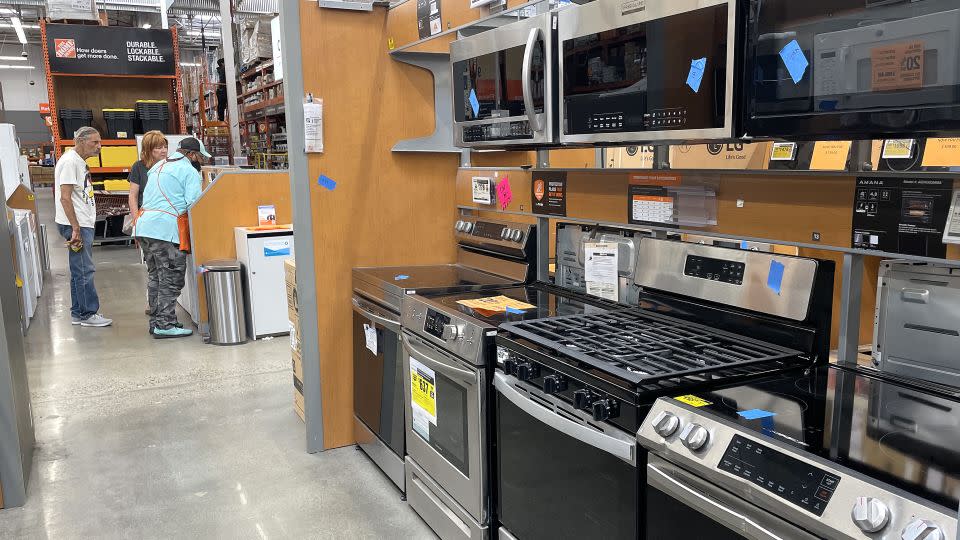Falling prices may sound good, but deflation can be dangerous. Here’s why
After encountering rapid price increases for more than two years, discounts at some stores would certainly feel like a much-needed respite.
But business leaders, economists and investment moguls aren’t so gung-ho about it.
Tech investor Cathie Wood, founder of ARK Investment Management, told The Wall Street Journal in a story published on Wednesday she’s more worried about deflation, when prices fall, than the inverse — inflation. “We’re seeing more and more signs of it,” she said, referring to deflation.
Falling prices of commodities like copper and lumber “negatively impacted” Home Depot’s third-quarter earnings, CEO Ted Decker told investors on the company’s earnings call earlier this week.
“As an example, on average, framing lumber was approximately $420 per thousand board feet compared to approximately $545 in the third quarter of 2022, representing a decrease of over 20%,” Home Depot’s executive vice president of merchandising, Billy Bastek, added on the call.
“Big-ticket comp transactions, or those over $1,000, were down 5.2% compared to the third quarter of last year,” Bastek said.

Why aren’t people buying more if prices are lower?
One of the first lessons students learn in Economics 101 is that when the price of a good is higher, people demand less of it. And when the price of a good is lower, people demand more of it.
But the problem with deflation is that when people begin to expect lower prices in the future, they have little incentive to make purchases right now. For instance, unless it was absolutely necessary, why would you buy a new oven today if you thought the price would go down significantly in a month?
When enough people think that way, it causes massive pullbacks in spending. That can prompt a recession if it means businesses can’t afford to employ as many workers.
Deflation isn’t widespread in the US
Deflation is not a problem across the board in the United States, which, like many countries, is experiencing inflation.
In China, however, prices across all goods and services were 0.2% lower in October compared to the same month last year.
US consumer prices are 3.2% higher compared to a year ago, according to the latest Consumer Price Index. But even though Americans are still paying more for goods and services compared to a year ago, the pace of the increases has slowed significantly.
That said, many goods in the United States are a lot cheaper than they were a year ago.
For instance, prices for eggs are 22% lower, the second-biggest year-over-year price cut behind health insurance, according to October CPI data.
Walmart CEO Doug McMillon said on Thursday consumers could soon encounter more uniform price cuts at grocery stores. He also warned that US-based Walmarts could enter “a deflationary environment.”
Besides eggs, other cheaper goods include airfares, gasoline, appliances and smartphones.
Preston Caldwell, chief US economist at Morningstar, referred to this as “selective deflation.” For now, he said, “it’s helping to push overall inflation back to the Fed’s 2% target with minimal pain in terms of unemployment and lost output.”
“In other words, it’s making a soft landing possible,” he told CNN.
For more CNN news and newsletters create an account at CNN.com
